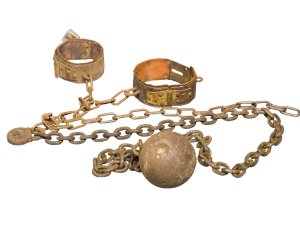 Having a convict ancestor used to be something to hide, but now it is often a matter of great personal pride to be able to say that one or more of our ancestors arrived as convicts. We want to find out as much about them as we can, and there is much information to be found.
Having a convict ancestor used to be something to hide, but now it is often a matter of great personal pride to be able to say that one or more of our ancestors arrived as convicts. We want to find out as much about them as we can, and there is much information to be found.
New South Wales took convicts from 1788 to 1842, with a further shipment in 1849. Convict administration was a major role of the early government, and many of the records kept can be seen to this day, giving valuable information about who the convicts were and what they did.
The important convict records include:
- Indents – lists of convicts “delivered” by the transport ship to the Colony. Information about each convict varies from very little at the beginning of transportation (typically Name, When and Where sentenced, Term, sometimes Age) to quite extensive information toward the end (Name, Age, Native Place, Occupation, Religion, Marital Status and Number of Children, When and Where Tried, Term, Height, Complexion, Eye and Hair Colour, Notations of Tickets of Leave and Pardons). Terms are usually 7 or 14 years, or Life.
- Tickets of Leave – after the convict had been in the colony for a few years he/she could apply for a ticket of leave. This enabled him to work for himself rather than for the government or an assigned employer as long as he stayed within the prescribed district. Rare before 1810.
- Conditional or Absolute Pardons – a conditional pardon excused the convict from the remainder of a life sentence for good behaviour. He could work where he wished but could not leave the Colony. An absolute pardon had no restriction placed on the convict. Pardons were usually given to convicts with Life sentences.
- Certificate of Freedom – once the fixed term to which the convict was sentenced was completed a Certificate of Freedom (or Emancipation) could be issued to prove that the convict was now free. He could work where he wished and return to England if he could afford the passage.
Other records on which your convict may appear
Your convict may also appear on Musters, Censuses and Assignment Lists. The Surgeon Superintendent’s Report for the voyage to Australia may also be available, although your convict will not be mentioned if he/she didn’t report in sick to the surgeon.
The Colonial Secretary’s Correspondence
There may have been correspondence about your convict to or from the Colonial Secretary. Your convict may have applied for permission to marry, or to have existing family brought over from England or Ireland. These records will be contained in the Colonial Secretary’s correspondence.
Trial proceedings
The convicts came from all over the United Kingdom, particularly England and Ireland. There are very few trial records that exist for Irish convicts but many English trial records still exist, and many of these have been microfilmed and even digitised.
See the State Records New South Wales Convicts Guide for more information about the convict records they hold.
[…] you have the birth, marriage and deaths of any ancestor, his/her spouse and their children, and the relevant convict records, it’s time to look further afield. The Colonial Secretary received all manner of […]